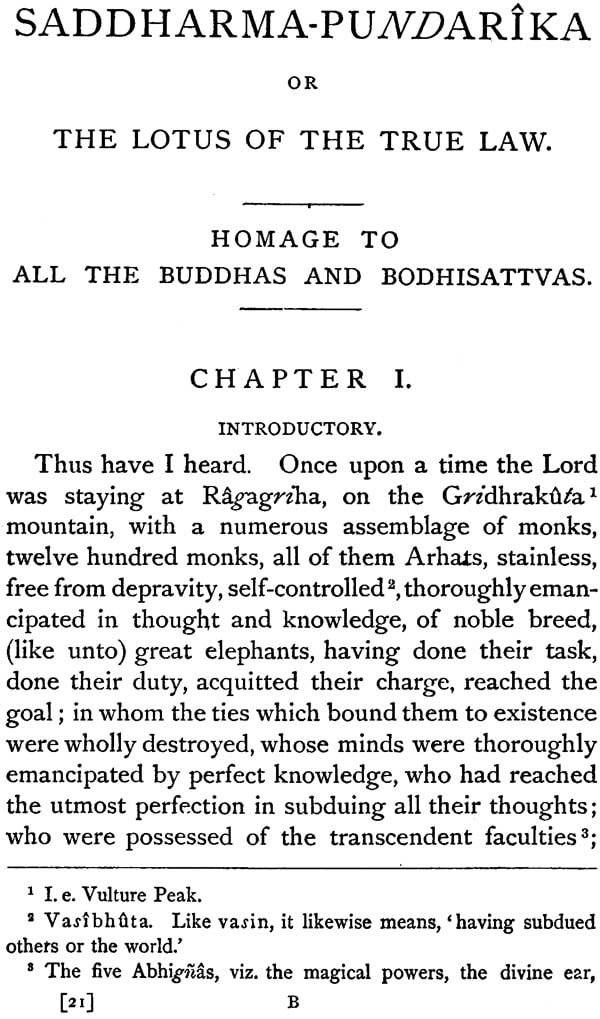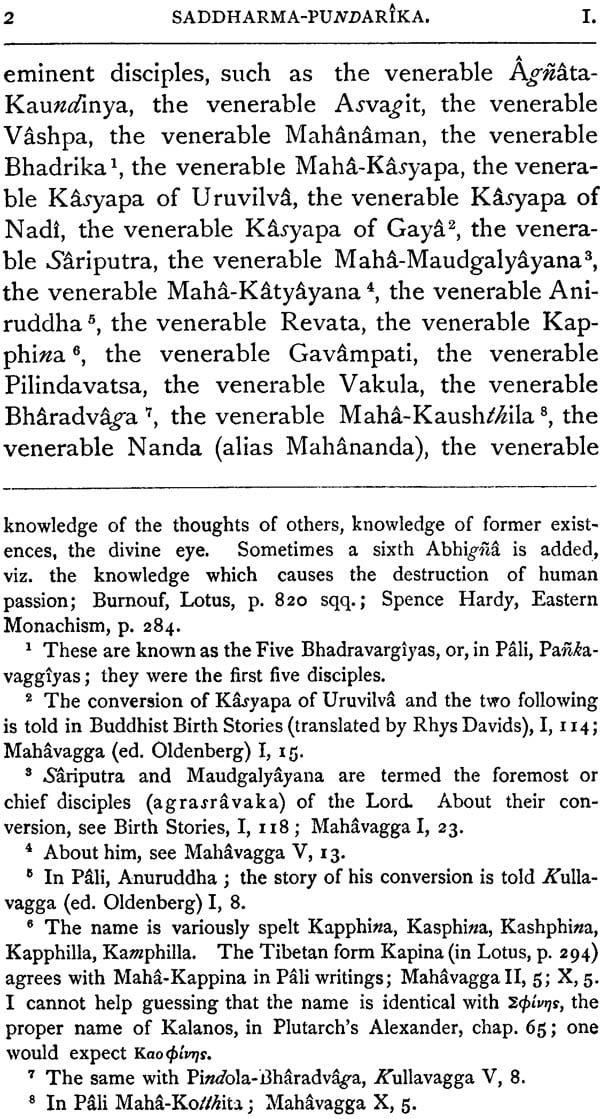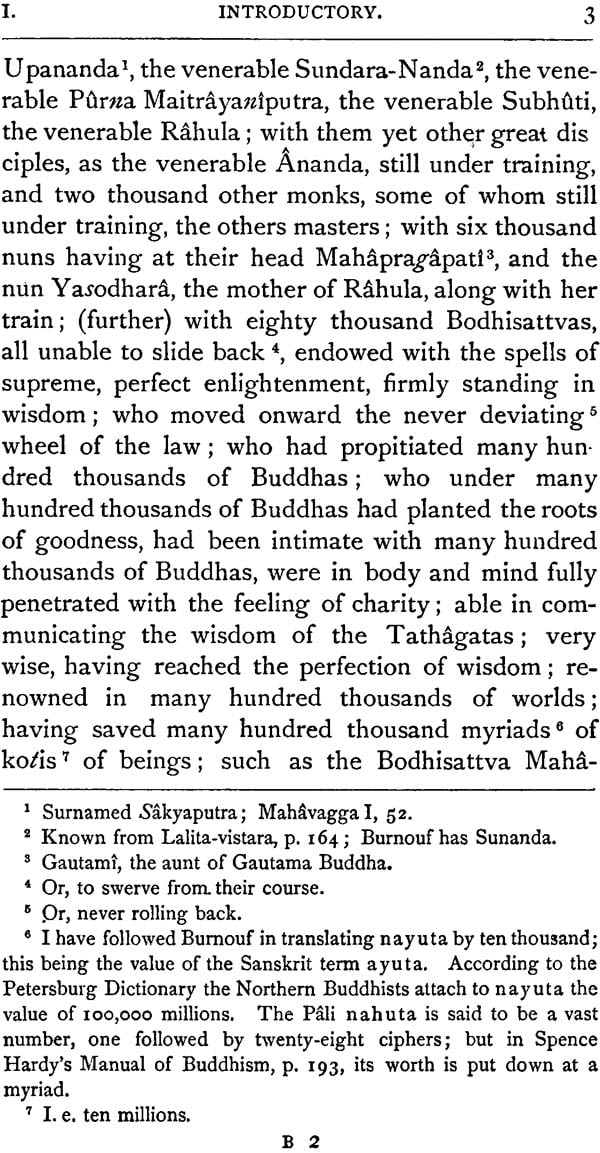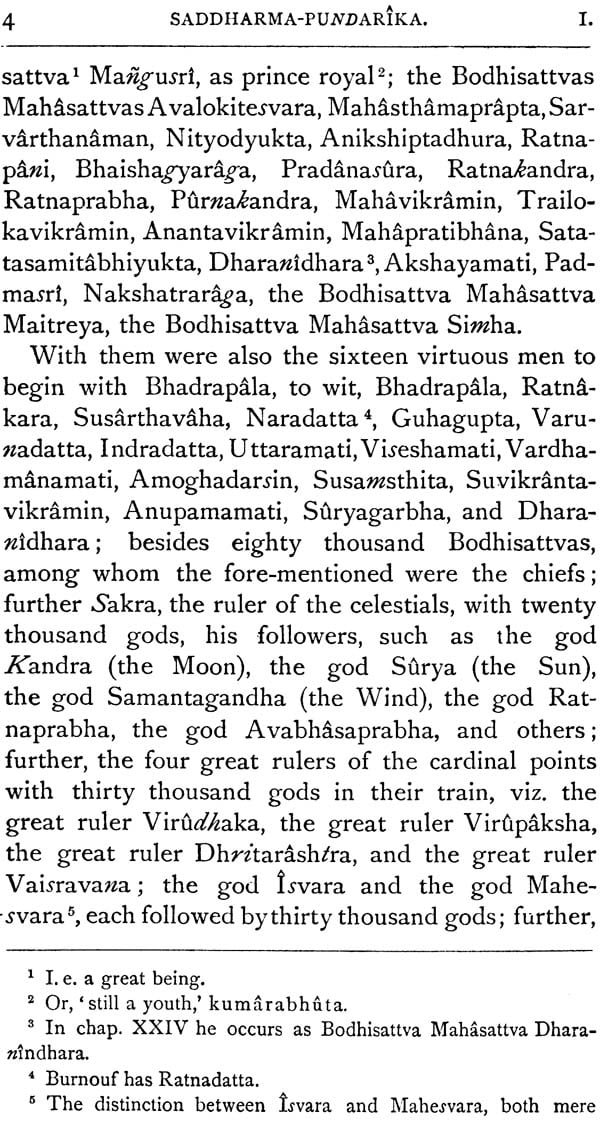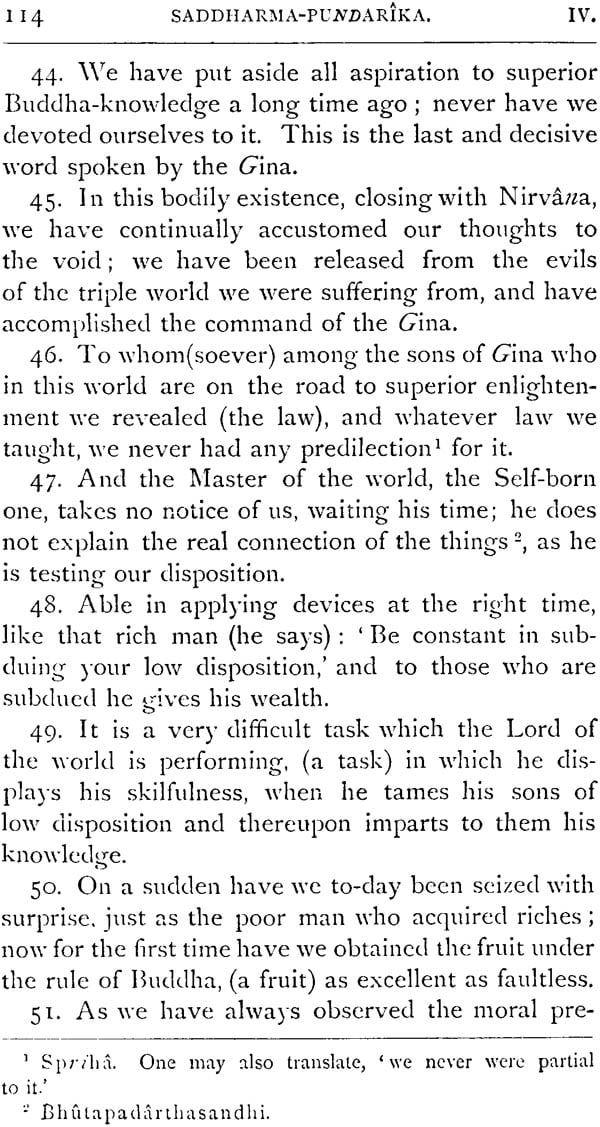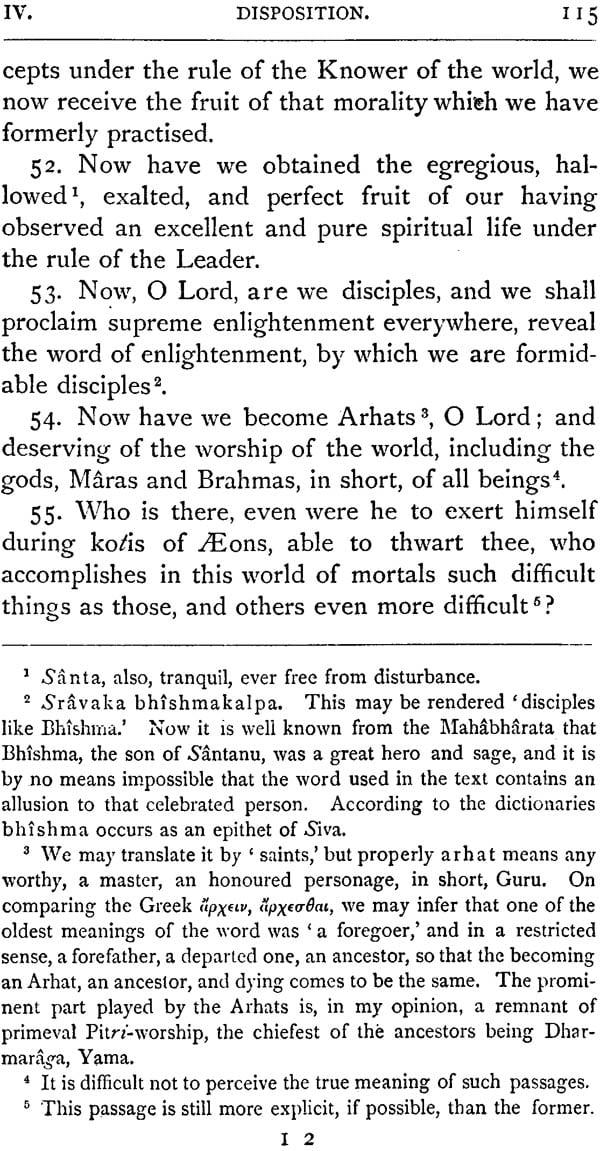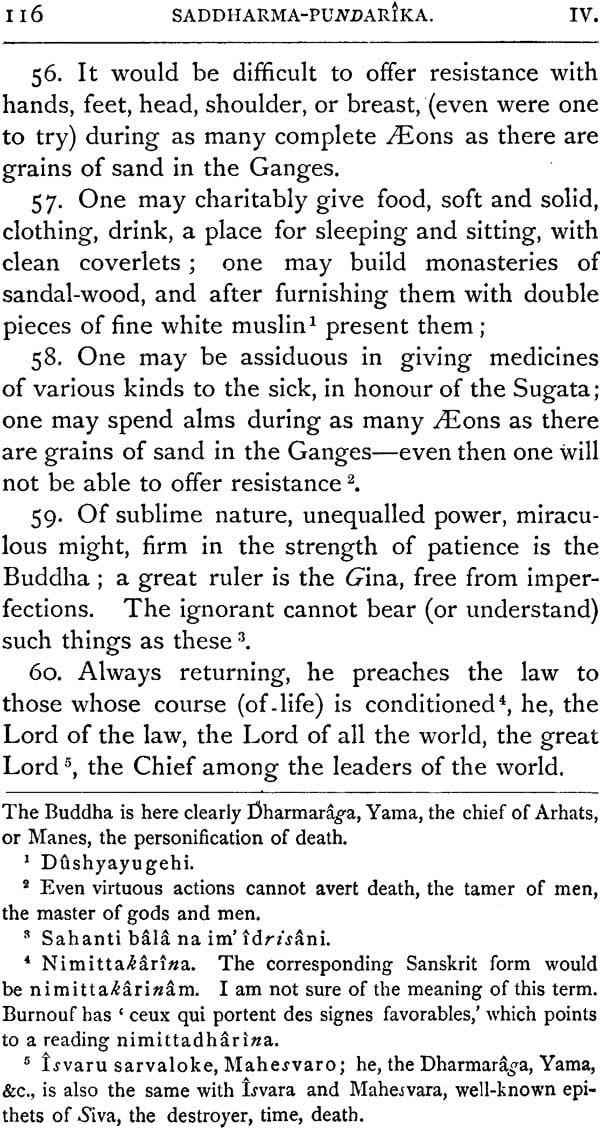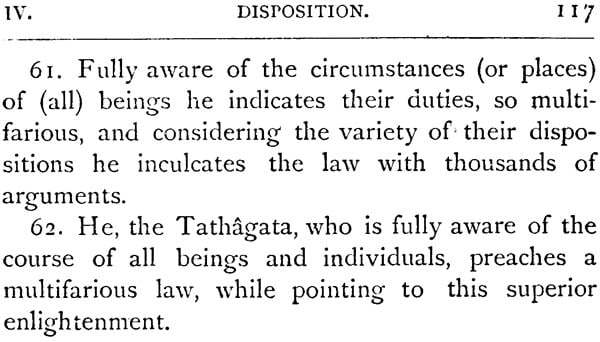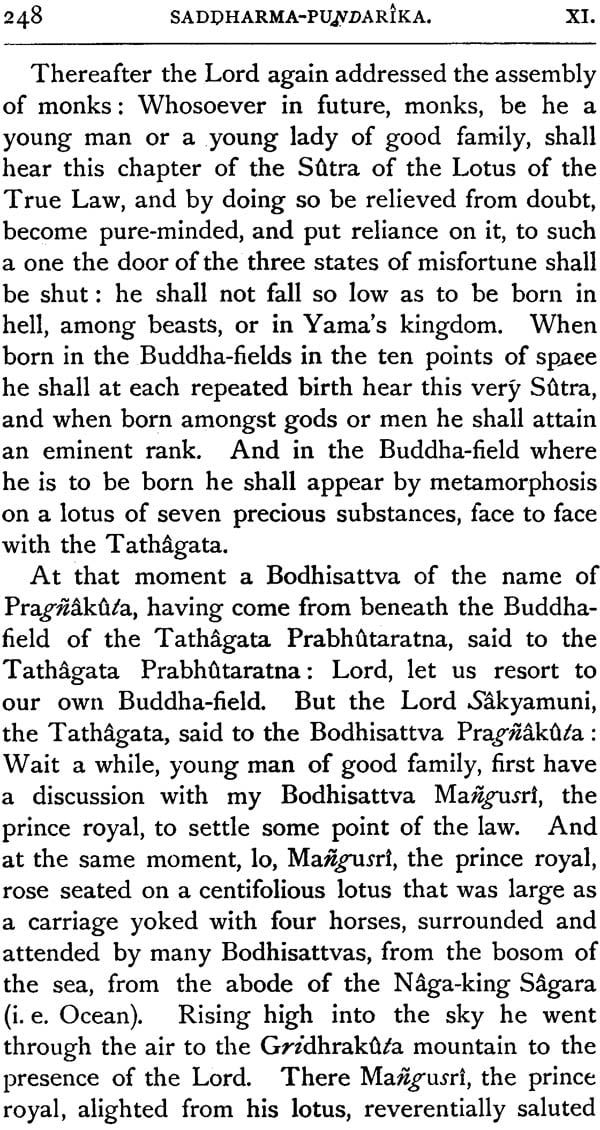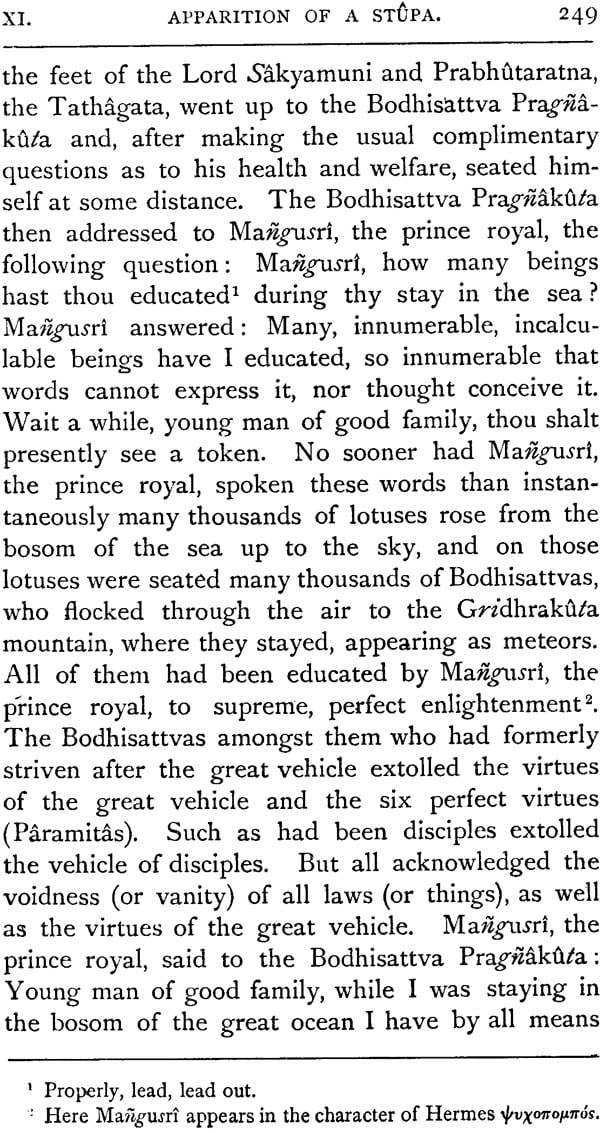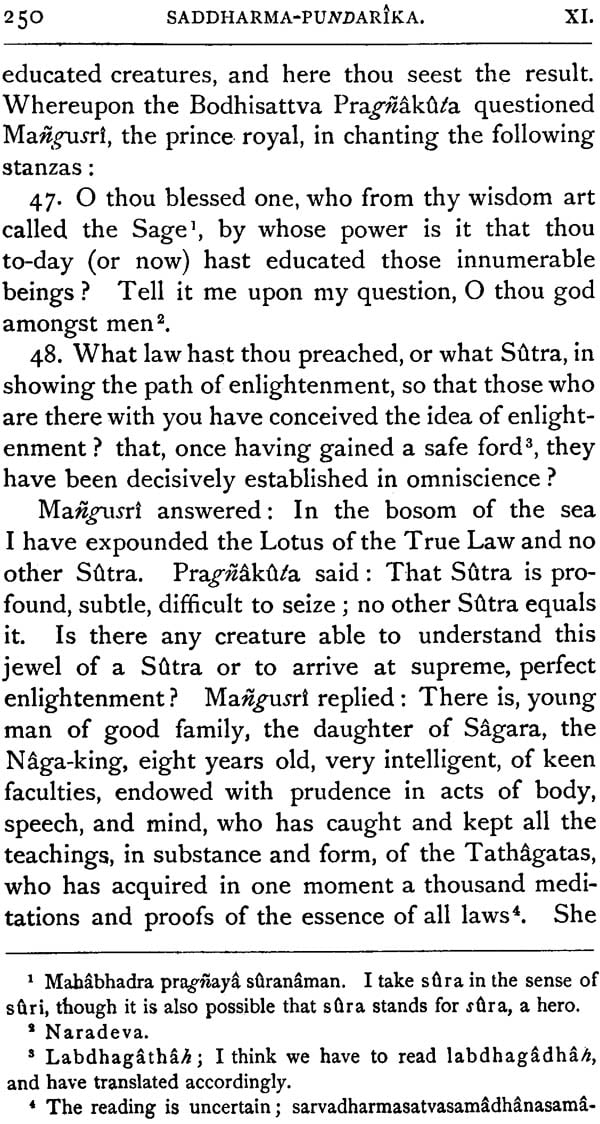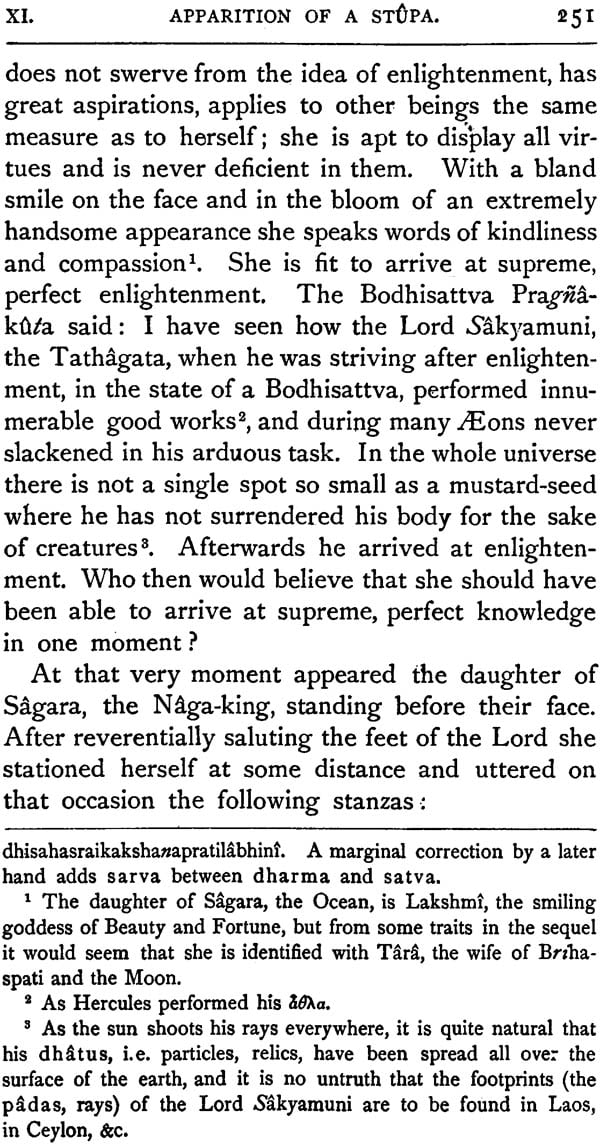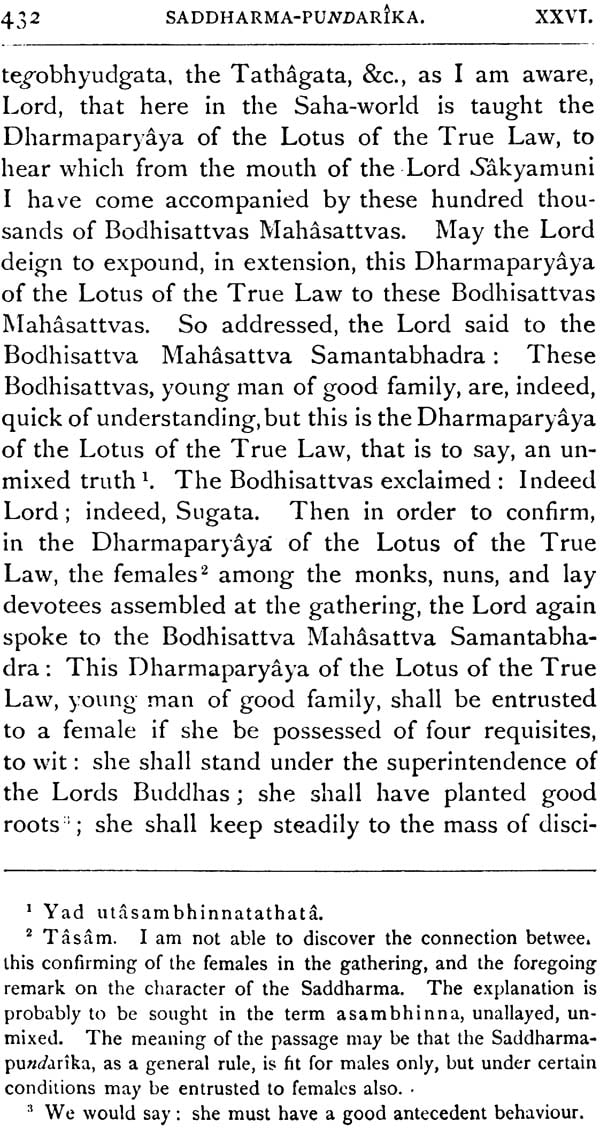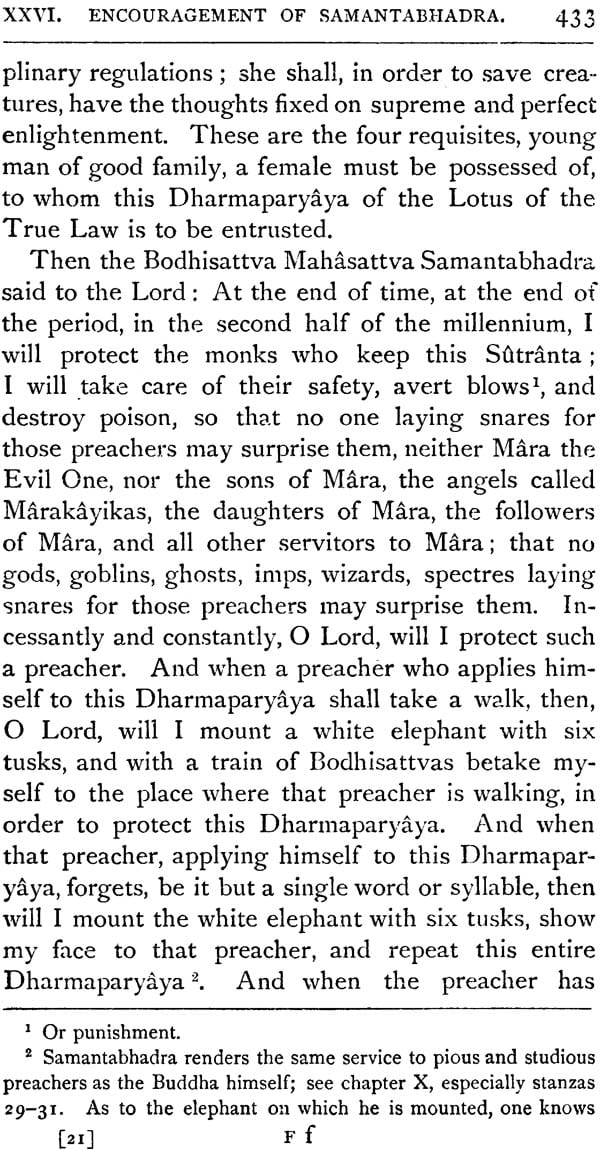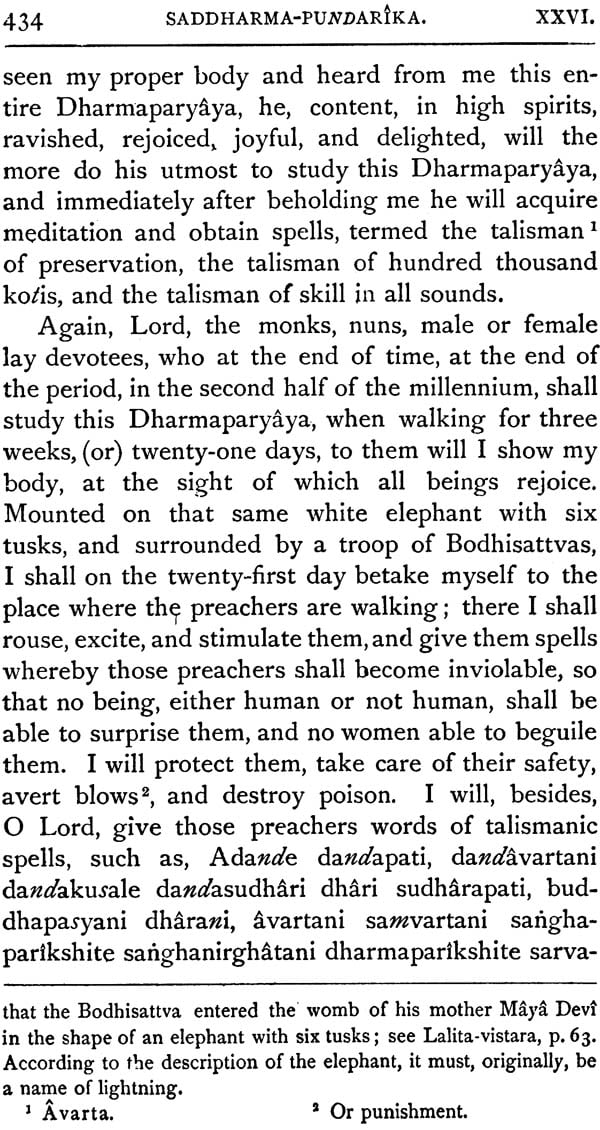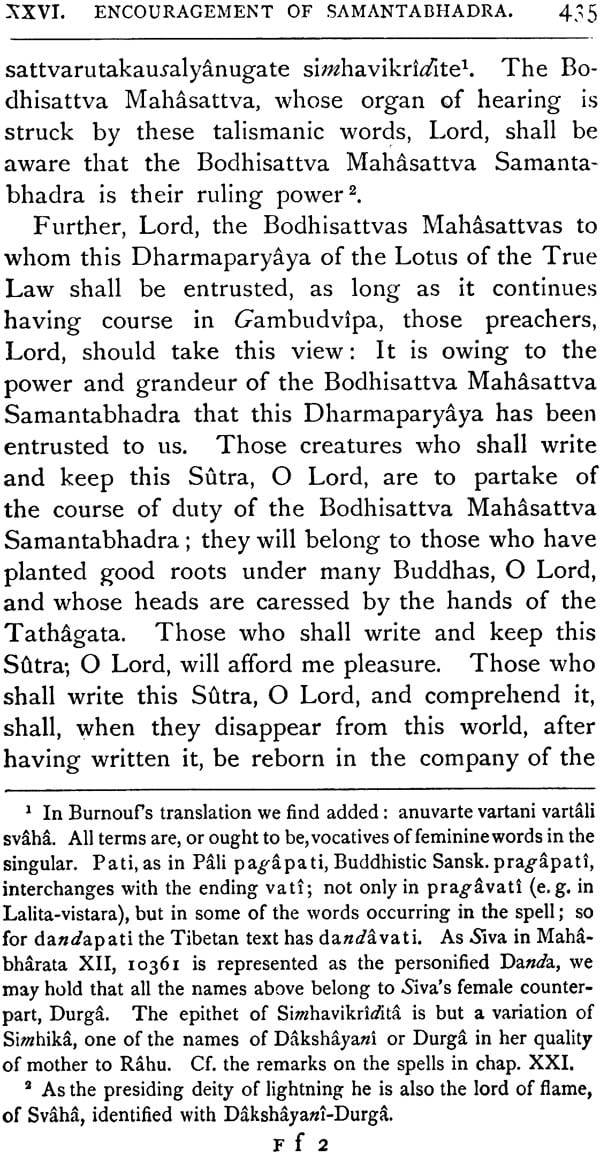
The Lotus Sutra (The Saddharma-Pundarika)
Book Specification
| Item Code: | NAC393 |
| Author: | H. Kern |
| Publisher: | MOTILAL BANARSIDASS PUBLISHERS PVT. LTD. |
| Language: | English Translation |
| Edition: | 2013 |
| ISBN: | 9788120801226 |
| Pages: | 496 |
| Cover: | Hardcover |
| Other Details | 8.8 Inch X 5.8 Inch |
| Weight | 740 gm |
Book Description
The Saddharma-pundarika is one of the nine Dharmas which are known by the titles of- 1. Ashtasahasrika Pragnaparamita; 2. Ganda-vyuha; 3. Dasabhumisvara; 4. Samadhi-raga; 5. Lankavatara; 6. Saddharma-pundarika; 7. Tathagata-guhyaka; 8. Lalita-vistara; 9. Suvarna-prabhasa. These nine works, to which divine worship is offered, embrace (to use the words of the first investigator of Nepalese Buddhism’) ‘in the first, an abstract of the philosophy of Buddhism2 in the seventh, a treatise on the esoteric doctrines; and in the seven remaining ones, a full illustration of every point of the ordinary doctrine and discipline, taught in the easy and effective way of example and anecdote, interspersed with occasional in stance of dogmatic instruction. With the exception of the first, these works are therefore of a narrative kind; but interwoven with much occasional speculative matter.’
As to the form, it would seem that all the Dharmas may rank as narrative works, which, however, does not exclude in some of them a total difference in style of composition and character. The Lalita-vistara e.g. has the movement of a real epic, the Saddharma-pundarika has not. The latter bears the character of a dramatic performance, an undeveloped mystery play, in which the chief interlocutor, not the only on; is Sakyamuni, the Lord. It consists of a series of dialogues, brightened by the magic effects of would-be supernatural scenery. The phantasmagorical parts of the whole are as clearly intended to impress us with the idea of the might and glory of the Buddha, as his speeches are to set forth his all-surpassing wisdom. Some affinity of its technical arrangement with that of the regular Indian drama is visible in the prologue or Nidana, where Mangusri at the end prepares the spectators and auditors—both are the same—for the beginning of the grand drama, by telling them that the Lord is about to awake from his mystic slumber and to display his infinite wisdom and power.
In the book itself we find it termed a Sutra or Sutranta of the class called Mahavaipulya. In a highly instructive discussion on the peculiar characteristics and comparative age of the different kinds of Sutras, Burnouf arrives at the conclusion that the Mahavaipulya Sutras are posterior to the simple Sutras in general1. As there are two categories of simple Sutras. those in which the events narrated are placed contemporary with the Buddha. those which refer to persons living a considerable time after his reputed period, e.g. Asoka, it follows that the composition of the Mahavaipulya Sutras must be held to fall in a later time than the production of even the second category of simple Sutras. Now in one of the latter, the Asoka-Avadana, we read of Asoka using the word dinara, which leads us to the conclusion that the said Avadana was composed, not only .after the introduction of dinara from the West, in the first century of our era or later, but at a still more modern time, when people had forgotten the foreign origin of the coin in question.
| Introduction | ix | |
| 1. | Introductory | 1 |
| 2. | Skillfulness | 30 |
| 3. | A Parable | 60 |
| 4. | Disposition | 98 |
| 5. | On Plants | 118 |
| 6. | Announcement of Future Destiny | 142 |
| 7. | Ancient Devotion | 153 |
| 8. | Announcement of the Future Destiny of the Five Hundred Monks | 191 |
| 9. | Announcement of the Future Destiny of the Ananda, Rahula, and the Two Thousand Monks | 205 |
| 10. | The Preacher | 213 |
| 11. | Apparition of a Stupa | 227 |
| 12. | Exertion | 255 |
| 13. | Peaceful Life | 262 |
| 14. | Issuing of Bodhisattvas from the Gaps of the Earth | 281 |
| 15. | Duration of Life of the Tathagata | 298 |
| 16. | Of Piety | 311 |
| 17. | Indication of the Meritoriousness of Joyful Acceptance | 328 |
| 18. | The Advantages of a Religious Preacher | 336 |
| 19. | Sadaparibhuta | 354 |
| 20. | Conception of the Transcendent Power of the Tathagatas | 363 |
| 21. | Spells | 370 |
| 22. | Ancient Devotion of Bhaishagyaraga | 376 |
| 23. | Gadgadasvara | 393 |
| 24. | The All-Sided One | 406 |
| 25. | Ancient Devotion | 419 |
| 26. | Encouragement of Samantabhadra | 431 |
| 27. | The Period | 440 |
| Index | 443 | |
| Transliteration of Oriental Alphabets adopted for the Translations of the Sacred Books of the East | 451 |
